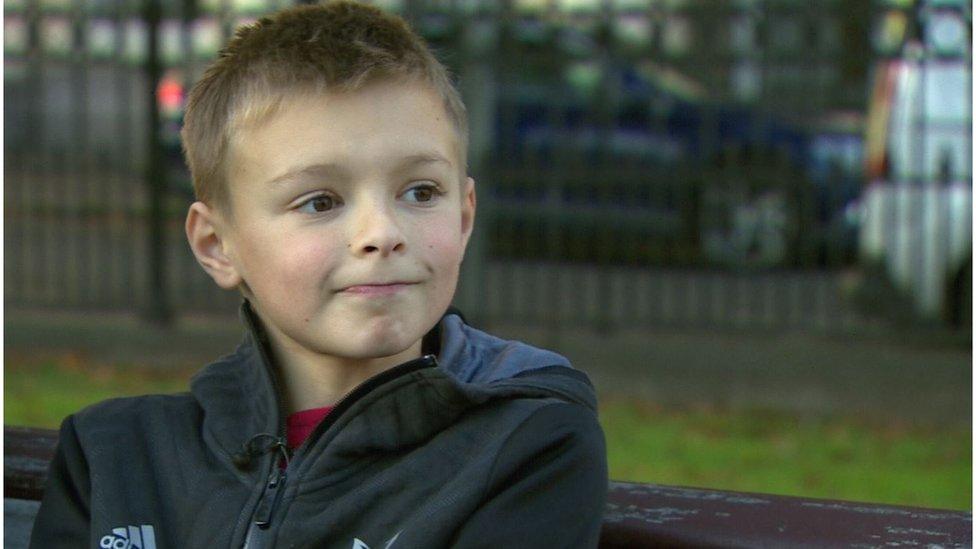Spinal cord stimulation: 'Start of a new life' for amputee now able to walk
- Published
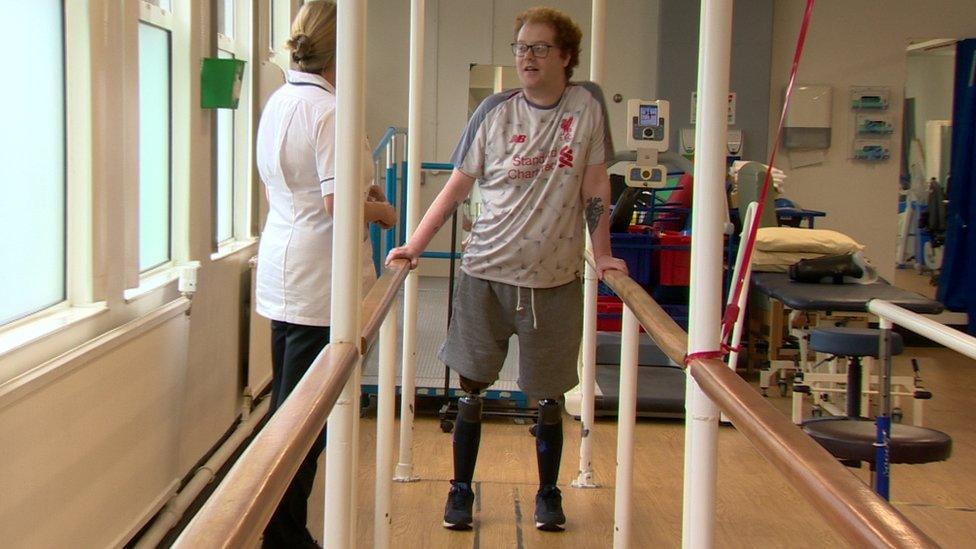
Ryan O'Connor was unable to walk for about two years due to pain
A 29-year-old from Dungiven, County Londonderry, has said spinal cord stimulation has given him the start of a new life.
Ryan O'Connor is one of three amputees in Northern Ireland to have a spinal cord stimulator fitted.
He had both legs amputated 11 years ago but walking with prosthetic limbs became too painful and he had to stop.
Spinal cord stimulation sends small electrical impulses to your spinal cord.
It helps block pain signals travelling to the brain.
Ryan said his life has now changed so much since he had the spinal cord stimulation fitted in April that he feels like he is starting over, after being unable to walk due to pain for about two years.
"It's been life changing for me because I've been able to put my legs back on, been able to use them more, been able to do more things with them, been able to start the gym because of the stimulation - and it's been an amazing feeling since," he told BBC News NI.
Born with a heart condition, he needed a heart transplant when he was 18.
Days after his transplant in November 2012, he went into cardiac arrest.
Because of the lack of blood flow to his legs, his calf muscles died and as a result both his legs were amputated.
On top of the transplant, cardiac arrest, and double amputation, he also had an aneurysm and a brain haemorrhage - all within weeks of each other.
"Everything was sort of 'go, go, go' in regard to it all happening in one fell swoop," said Ryan.
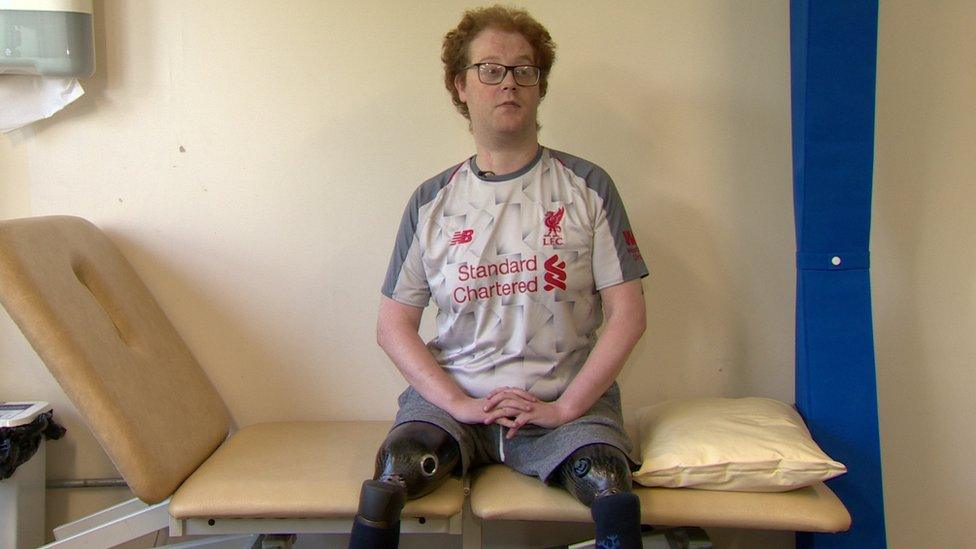
"When I stand up, It feels like I'm on my own legs" - Ryan O'Connor
He added: "When I had the transplant, it changed my life.
"When I lost my legs, it changed my life.
"And now that I've got the [spinal cord] stimulator in, it's changed again but all for the better."

In April 2013, Ryan was fitted with prosthetic limbs at Musgrave Park Hospital in Belfast.
"After a few months, I started to get used to the prosthetics and ever since then I've been working my way up to new prosthetics, which [are] the ones I'm currently on now, known as the C-leg 4," he said.
"Because I don't have the knee it helps me walk with a better style and basically, if I was wearing trousers, no one would notice I was wearing prosthetics because the knee is meant to show that you can walk normally."
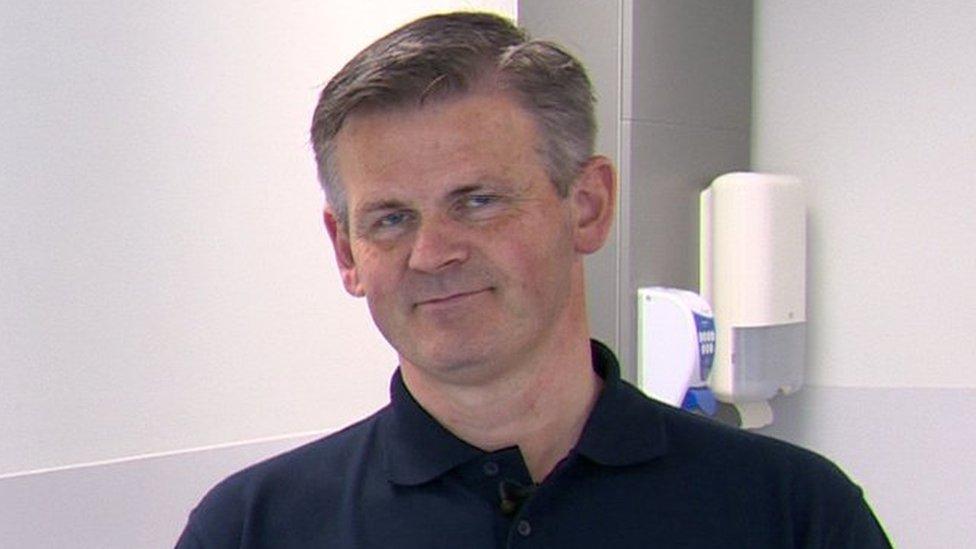
Prosthetics manager Gavin Campbell said it can take time for patients to get used to new prosthetics
Gavin Campbell, prosthetics manager at the Amputee Rehabilitation Centre in Musgrave Park Hospital, said Ryan has been on a journey involving many different types of prosthetics, moving from "stubby sockets, which had really no components" to "very simple lightweight componentry".
But as Ryan got stronger, then "we could start to make things a bit more complicated for him", he added.
Gavin said prosthetics have changed a lot over the years and, as a service, they have sought to get additional funding to provide more choice to their patients.
"The difficulty to walk with two artificial limbs is so great that you need as much help as the prosthetic limbs can give you."
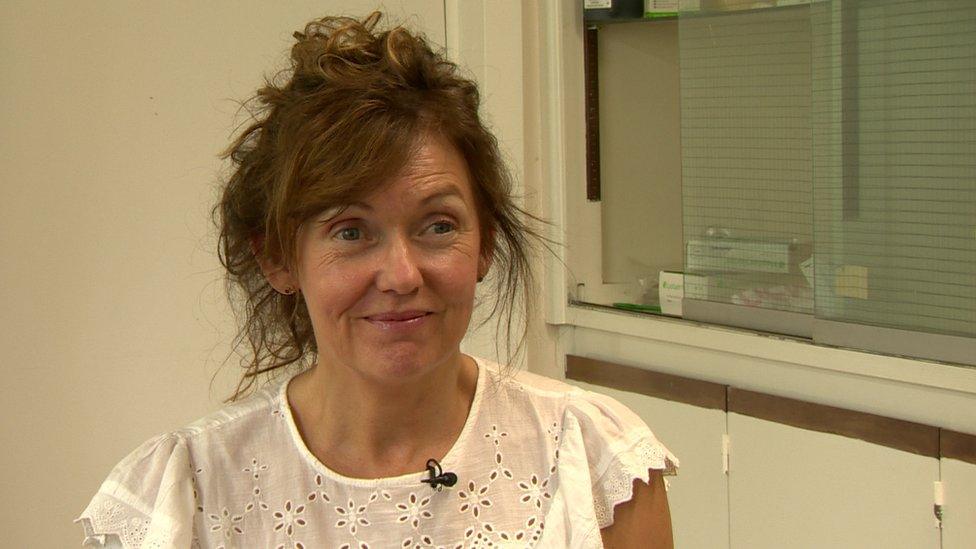
Lorraine Graham said the future looks very bright for Ryan
While Ryan said his current prosthetics are the best you can get, he had to stop using prosthetics for a couple of years because of pain in his thighs.
Lorraine Graham, a consultant in rehabilitation medicine, focused on finding out why he was sore and finding a treatment for that.
Initially, medication didn't work, so she referred Ryan to a pain specialist to consider a spinal cord stimulator - a relatively new method of helping pain.
"This spinal cord stimulator has made the most incredible difference to Ryan because it has opened up the possibility of getting up to walk again with artificial limbs," she said.
"He's still young, has all of his life to live, has potential to improve his strength and walk even better.
"The future looks very bright for Ryan."
'I feel more normal'
Ryan is now enjoying nights out with his brothers and friends, and hopes to break into the film and TV industry.
"I feel more confident with my legs on me, I feel more normal," he said.
"When I stand up, I feel like I'm on my own legs.
"It doesn't matter that they're prosthetics to me they're still mine."
Related topics
- Published14 November 2023
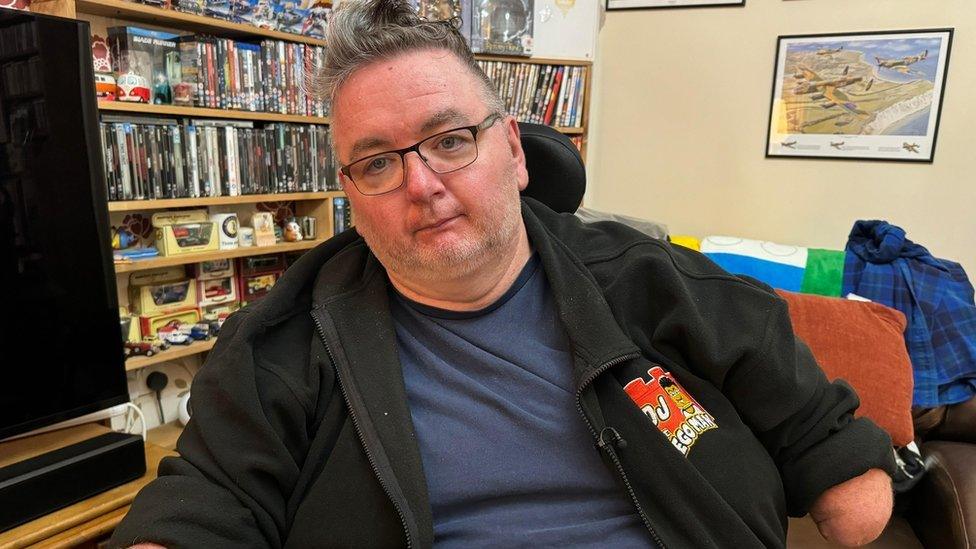
- Published3 April 2020
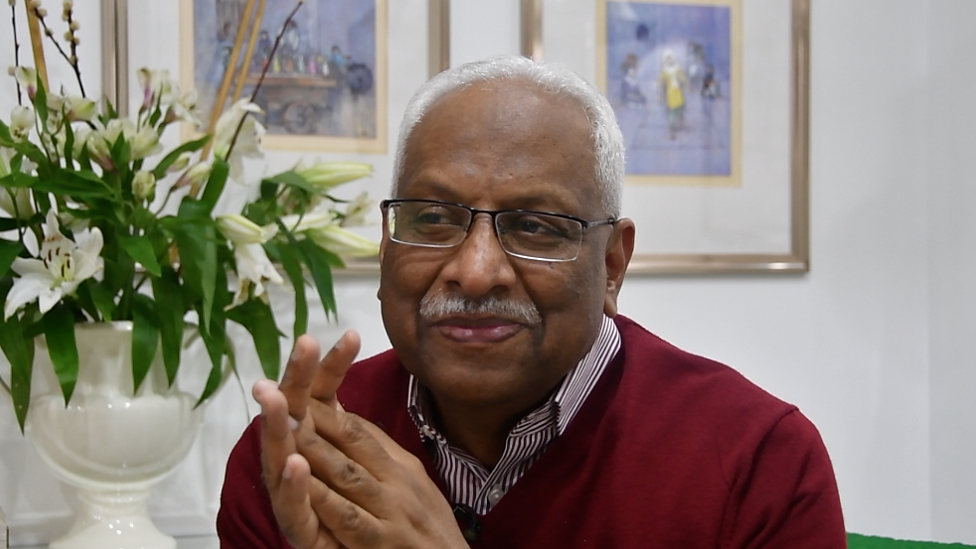
- Published30 October 2019
